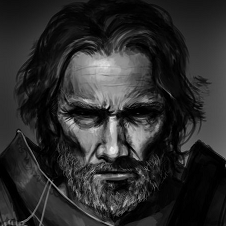-
Posts
38,420 -
Joined
-
Last visited
Content Type
Profiles
Forums
Events
Gallery
Everything posted by Ace-Garageguy
-
I recall when they came out, a lot of guys were disappointed the suspension didn't allow the model to be built to approximate the box art. I agree entirely...if you're going to portray the kit as building something with a particular stance, you really ought to include the parts for guys who can't do the mods...and shouldn't HAVE TO do the mods. It's only fair.
-
Hey, nothing like a soupcon of acoustic-tile fiberglass backing to give your lunch that certain extra je ne sais quoi.
-
Obviously, injuries aren't funny...but I posted the first sign because of its seeming concern more for the machine than the Mr.Bill-like character in its grasp. I've worked around and with dangerous stuff my entire life, and so far, I still have all my fingers and toes...knock wood. But there are times I should really pay closer attention. I haven't ridden a bike in years, just got a 24-speed trail job. First time around the block, I rode it in sneakers with just stupidly too-long laces. Guess what? They got tangled in the chain, and I ALMOST went down...in front of a car...just because I wasn't paying enough attention to what I should have been paying attention to. But gee...there weren't any warnings on the bike in big red letters that said "don't ride this thing with shoelaces flapping in the breeze, moron". Guess I should have gone ahead and crashed...and sued somebody.
-

1946 Eisenhauer Twin Engine
Ace-Garageguy replied to greymack's topic in WIP: Model Trucks: Big Rigs and Heavy Equipment
That would make just about the coolest period LSR-car hauler imaginable. -
I've occasionally asked for specific help finding aftermarket bits for a particular build within my build thread itself. People here have been very helpful, far as pointing me in the right direction. Understanding how a search engine interprets a query, and rephrasing it, or using different terms, very often allows me to find things on the web that posters have claimed "aren't there". Just now, a search for "1/24 Ferrari photoetch" returned 83,000 hits. Most every hit on the first 14 pages was relevant (that's as far as I looked). Refining the search to a specific Ferrari, and perhaps using the "advanced" search function of google, would be helpful. The internet is an incredible source of info, but it takes a little digging sometimes. As noted above, bookmarking the address of a site that has what you might need, even if you don't need it today, helps a lot in future searches. Tagging the address with something relevant also helps, like "Ferrari 1/24 aftermarket" ...and alphabetizing your bookmarks...helps to locate the info later. And if you've already done a competent search and still come up empty, ask here. Lotsa guys know of obscure sources for out-of-production or unusual bits, and nobody gets prickly if you've already put a reasonable effort into finding out for yourself.
-
Hmmmm...sort of the poor man's Goldschlager?
-
Just hose your shoes down with Clorox every day before you take 'em off. Doesn't do much for the shine, but kills pretty much whatever might be lurking in the "questionable liquid" residue. Seriously, this is one of the reasons I got into the old Asian habit of taking my shoes off before entering the living space.
-

Aston Martin DB4 kit?
Ace-Garageguy replied to dawgvet's topic in Model Building Questions and Answers
Great comparison shots, Matt. The Airfix model is so much better than the others as to almost look like a different car. Very informative pix, and most helpful of you to take the time to photograph and post these. -
You can always combine the very nice Revell stock '48 woody bits with one of these Testors kits...not too hard, really.
-
One would certainly think that Revell would have done pretty extensive market research prior to announcing what seems like a pretty big and expensive deal with Foose. They may not always have people on staff who know how to measure accurately, or what the parts of cars actually do, but I'm sure they have plenty of business degrees to do marketing studies. IF the ground-up kits are well designed, correctly proportioned and mechanically scale-accurate, they're more parts-box material I'll certainly buy multiples of, whether I ever intend to build them OOB or not.
-

Welp, That Sucks
Ace-Garageguy replied to Quick GMC's topic in General Automotive Talk (Trucks and Cars)
Depends on how he's insured. With special-interest-car "stated value" insurance, even if the "book" value of the car is say, $10,000, you can insure it for $25,000...or more. Higher premiums, but you'll get more towards repairing something like this, obviously. It's also much easier to retain a non-salvage title that way, too...in case there's not sufficient insurance but the owner wants to repair the car over time. Repop, salvage and NOS structural parts are available for these cars, and drilling out all the spotwelds on the damaged bits, jigging the whole mess, and welding new stuff back in correctly is not overly expensive, really. -

Welp, That Sucks
Ace-Garageguy replied to Quick GMC's topic in General Automotive Talk (Trucks and Cars)
Zackly. Or, he used some cheapo no-grade U-bolts on the axle. You can get real dandies for trailers at Harbor Freight. -

Aston Martin DB4 kit?
Ace-Garageguy replied to dawgvet's topic in Model Building Questions and Answers
One of those "eye of the beholder" things I guess. Whereas I think the last of the Spitfires managed to retain the perfect proportions of the originals even though they were larger and heavier airplanes, to me the P51-H, while not bad really, just isn't anywhere near as perfectly drawn as the D below (and I'm sure there are plenty of folks who won't really see the differences...) -

Aston Martin DB4 kit?
Ace-Garageguy replied to dawgvet's topic in Model Building Questions and Answers
Jeez Louise...the D is SOOOOO much better looking an airplane than the H. Holy cow. I always thought the H looked like a bad drawing of a D. P-51D...one of the most perfect aviation designs ever. P-51H...blecch. Kinda like a tail-dragger Airacobra, but not as pretty... -

Question for anyone using MKM for the android tablet
Ace-Garageguy replied to Nova-ss's topic in The Off-Topic Lounge
Couple online reviews, anyway... https://www.appjenny.com/Android/App/com.expertiseandroid.mkm -

34 ford pick up converted
Ace-Garageguy replied to Skate4fun's topic in Model Trucks: Pickups, Vans, SUVs, Light Commercial
Very imaginative use of bits. Looks like it could work if built full-scale too, which is always a big plus to me. -

Re-issued or new tooling? Flintstones
Ace-Garageguy replied to Drago's topic in Car Kit News & Reviews
I always kinda went for Betty myself...
